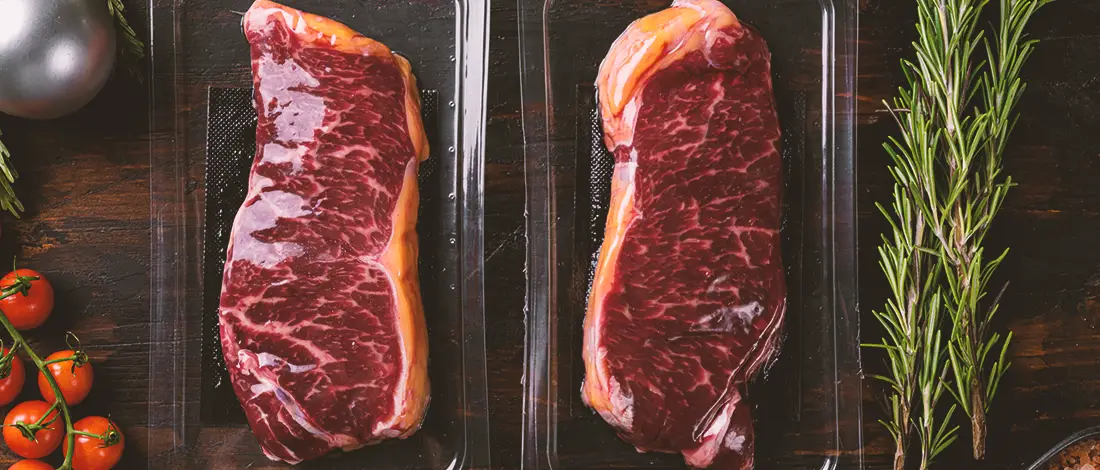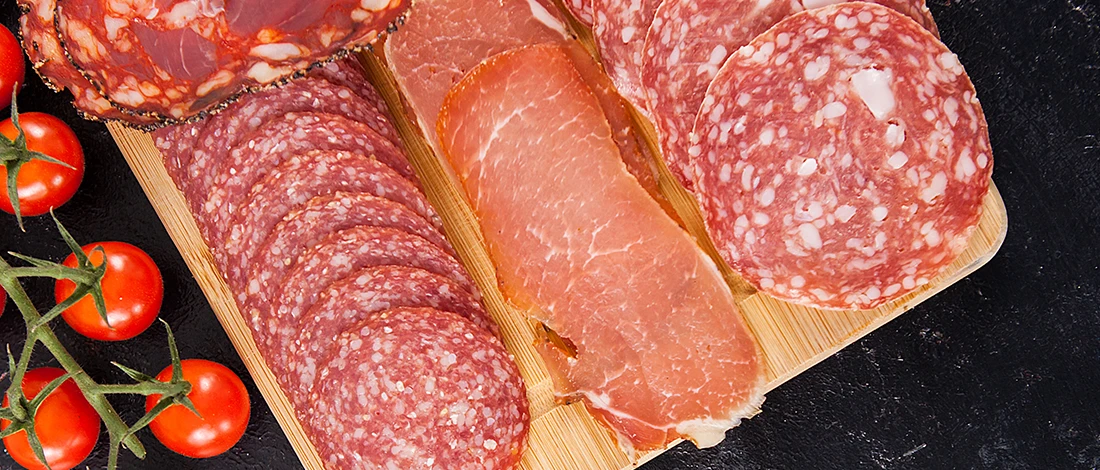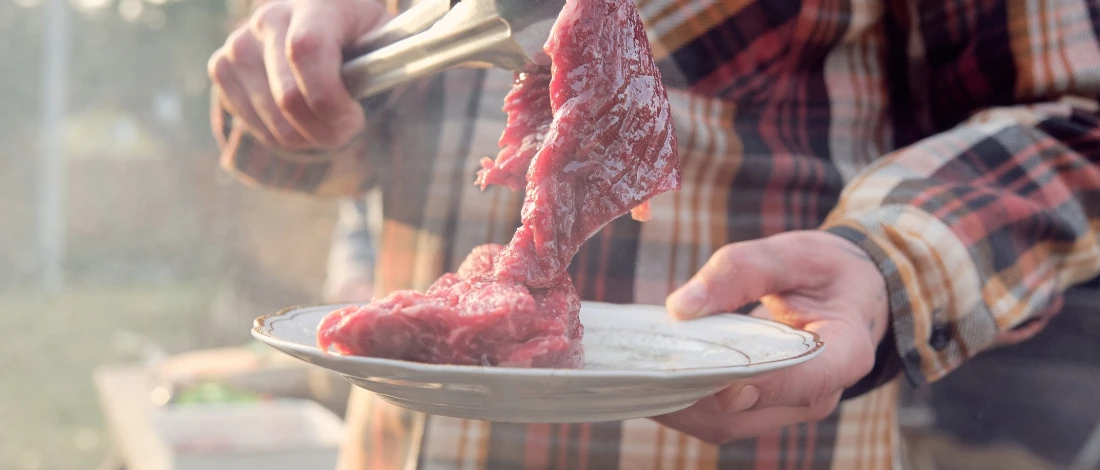When I started my carnivore lifestyle ten years ago, one of my main challenges was preserving meat so that I could extend its shelf-life.
At Carnivore Style, we understand how important it is to preserve quality meat, so I spent countless hours researching ways to preserve meats and talked with my local butcher.
I have perfected my meat preservation methods over the years, and today, I'll talk about every way you can preserve your meat to keep it fresh for a long time.
Quick Summary
- You can preserve your meat in several ways, including curing meat, canning meat, smoked meat, pressure canning, corned beef, and many more.
- You can use common household ingredients for preserving meat, such as sugar, fat, oil, and salt.
- Make sure to store meat in a sterilized container when preserving.
13 Ways of Preserving Meat
I’ve been ordering my cuts from ButcherBox, a meat delivery company selling sustainably sourced meat without preservatives, hormones, or additives. Needless to say, I’ve had great results with the cuts of meat I preserved.
Here are the methods you can use for storing meat the right way.
1. Canning

Canning is an easy way to preserve and prepare meat. Store it in an airtight container, and you’ll have quality meat for two to three years.
The best way to can meat is to use a pressure canner. A pressure canner heats water and traps the steam in a pressurized container [1]. This brings the temperature to 240 degrees, which kills any bacteria.
Overall, a pressure canner removes oxygen inside the can and preserves the meat.
2. Curing
Curing is also called salting, and it’s one of the oldest meat preservation methods. You can cure meat like poultry, fish, beef, and pretty much any kind of meat. It also works on both cooked meat and raw meat.
Start the curing by removing as much fat as you can. Then rub the salt and other spices you want. You can also use brown sugar to blunt the taste of salt.
Make sure to cover the meat completely with salt. Then leave it in the fridge for a week. After this time, rinse off the salt with water. Finally, wrap the meat in a cheesecloth, and store it in a dry and cool place.
The salt draws out the water from the meat, so there’s less chance of bacteria spreading.
Salt-cured meat can be eaten for two to three months.
Best well-known cured meats are prosciutto, chorizo, jamon iberico, and Parma ham.
3. Drying

Drying, or dehydrating meat, is another common way of preserving meat. You’ve probably had jerky before, which is a form of dried meat. Other examples are dry sausages and free-dried meats.
Dried meat is made by putting the meat in a marinade with spices, then dehydrating it. You can use either a solar or an electric dehydrator. In case you don’t have a dehydrator, you can use an oven or just hang the meat in the sunlight.
Drying also removes the moisture from the meat, so the microorganisms can’t grow.
Tip: Cut the meat into thin strips and remove as much fat as you can for it to dry effectively.
4. Freeze Drying
You can also freeze dry meats. This is one of the most expensive methods because a freeze dryer is costly. However, it’s also one of the best options for keeping the meat fresh.
You need to cut the meat into thin slices and place them on the tray of the freeze dryer. The device will lower the temperature to negative fifty degrees, creating a vacuum around the meat.
Once this is done, the inside of the dryer warms up, and the water is removed from the meat by turning it into vapor. Essentially, you have frozen meat that’s dried.
Also Read: Can You Freeze Deli Meat?
5. Smoking
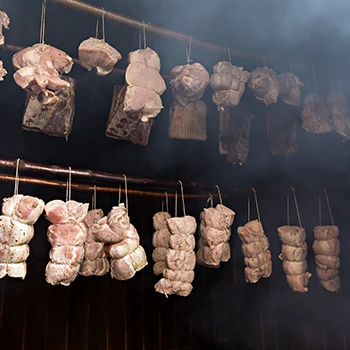
Meat smoking doesn’t only preserve your meat but makes it flavorful. You need to buy a smoker and ideally have a backyard or enough space outside to have the smoker running.
Start by soaking wood chips in water for one day. Then put the chips into a smoke box. Adjust the temperature, and place the meat on the racks within the smoke.
You’ll have to wait until the meat reaches the right temperature (the cooking temperature for pork and beef is 145 degrees [2]). You should add more wood chips to the smoker for the best flavor.
“There are three important temperatures to remember when cooking meat or eggs at home: Eggs and all ground meats must be cooked to 160°F; poultry and fowl to 165°F; and fresh meat steaks, chops, and roasts to 145°F.”
- Department of Health
Note: You can do cold or hot smoking. Cold smoking is used for fish and cheese, and it’s done at a temperature of around 80 degrees. Hot smoking is used for pork, beef, venison, and other kinds of meat, and the temperature is around 160 degrees.
6. Brining
Brining is another way to extend the shelf life of meat, and it’s a traditional preservation method.
You need a mix of water, curing salt, and brown sugar. Soak the meat in this mix for a few weeks, making sure the mix covers the salt completely. After about a month, store meat at room temperature.
Salt gets into the meat and stops the bacteria from spreading, and the water keeps the meat moist.
Overall, brining is the best method to keep the meat fresh and moist.
7. Pickling
You submerge the meat in vinegar to pickle it. This manages oxygen, water, and acid.
Keep the meat in a pickling solution for about three days, and make sure it’s fully submerged in the liquid.
You can use vinegar-based brine to improve the flavor of pickled meat.
8. Rillettes

Rillettes is a meal on its own. You cut the pieces of meat, salt them, add herbs if desired, and cook until the fat is shredded.
Then wait until the meat cools down, and shred or chop it further. Finally, you can store meat in glass jars.
Rillettes are mostly eaten as an addition to a meal by spreading over bread. It can last a month when properly made.
9. Confit
Confit is mostly used to make duck confit, but you can use it for other kinds of meat as well.
Slowly cook the meat in oil or its own fat. Store the meat in a dry place when cooked. Don’t wait until it completely cools down, but store it in a jar while the meat is still warm.
You can also use this method for vegetables, and it’ll keep food fresh for several months.
10. Preserving with Fats and Oils
Fats and oils repel water and seal the meat against microorganisms.
You can cook the meat in its own fat or with additional fat. Once it’s cooked, blend the meat and fat together.
Meat sealed in fat can last for several months.
11. Preserving with Sugar

Sugar is one of the most commonly found ingredients in every pantry, so it’s great you can use it to preserve meats as well. You can use sugar to preserve ham, bacon, pork, and fruit.
Start by chopping the meat into small pieces. Then put the meat into a clean jar, and fill the rest of the jar with sugar syrup. Make sure the jar is tightly sealed, and you’re done.
This method works because sugar prevents the growth of bacteria.
12. Preserving with Alcohol
Alcohol is an excellent deterrent to bacteria, mold, and yeast, which makes it a great preservation method.
You can use alcohol to preserve the same foods you preserve with brines.
However, this isn’t the most affordable way of preserving meats and is significantly more expensive compared to sugar.
You’d have to use food-grade ethanol, which means it can be drunk when you remove the meat.
Also, keep in mind the taste of meat preserved in alcohol might not be for everyone.
13. Preserving with Lard
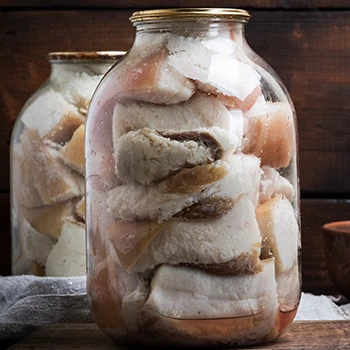
The final way to keep meat fresh is to use lard. Lard is a traditional way of preservation, and it can be practical if you have a lot of fat.
Preserving with lard is also extremely easy and doesn’t require any special equipment. All you need to do is put the cooked and salted meat in a sterilized container and cover it with melted lard.
Lard stops the air from getting to the meat, which also means no bacteria can grow.
Make sure to keep the meat covered in lard in a cool and dry place. This method won’t be effective if you keep it in a hot location.
Another thing to keep in mind is that fats taste different. Lamb and sheep fat can change the flavor of your meat. The best fat to use is goose or duck because it has a clean and pure flavor.
Related Articles:
FAQs
How Do You Preserve Meat Long Term?
You preserve meat long-term by making canned meat, dry meat, or freezing it.
How Do You Preserve Raw Meat Without Refrigeration?
You preserve raw meat without refrigeration by curing it.
How Do You Preserve Meat for Decades?
You preserve the meat for decades by drying it in order to prevent microbial growth and spread on the meat.
What is the Best Preservative for Meat?
The best preservative for meat is sodium nitrite or potassium nitrite because they provide great protection against botulism in preserved meats.
At Carnivore Style, we want to ensure your meat stays fresh and ready for your next carnivore meal. Check out our other guides for more tips on preserving, preparing, and enjoying your favorite cuts of meat.
References:
- https://nchfp.uga.edu/how/can_05/strips_cubes_chunks.html
- https://www.health.state.mn.us/people/foodsafety/cook/cooktemp


